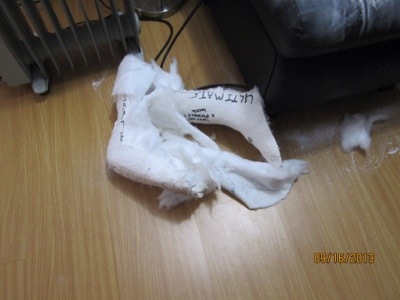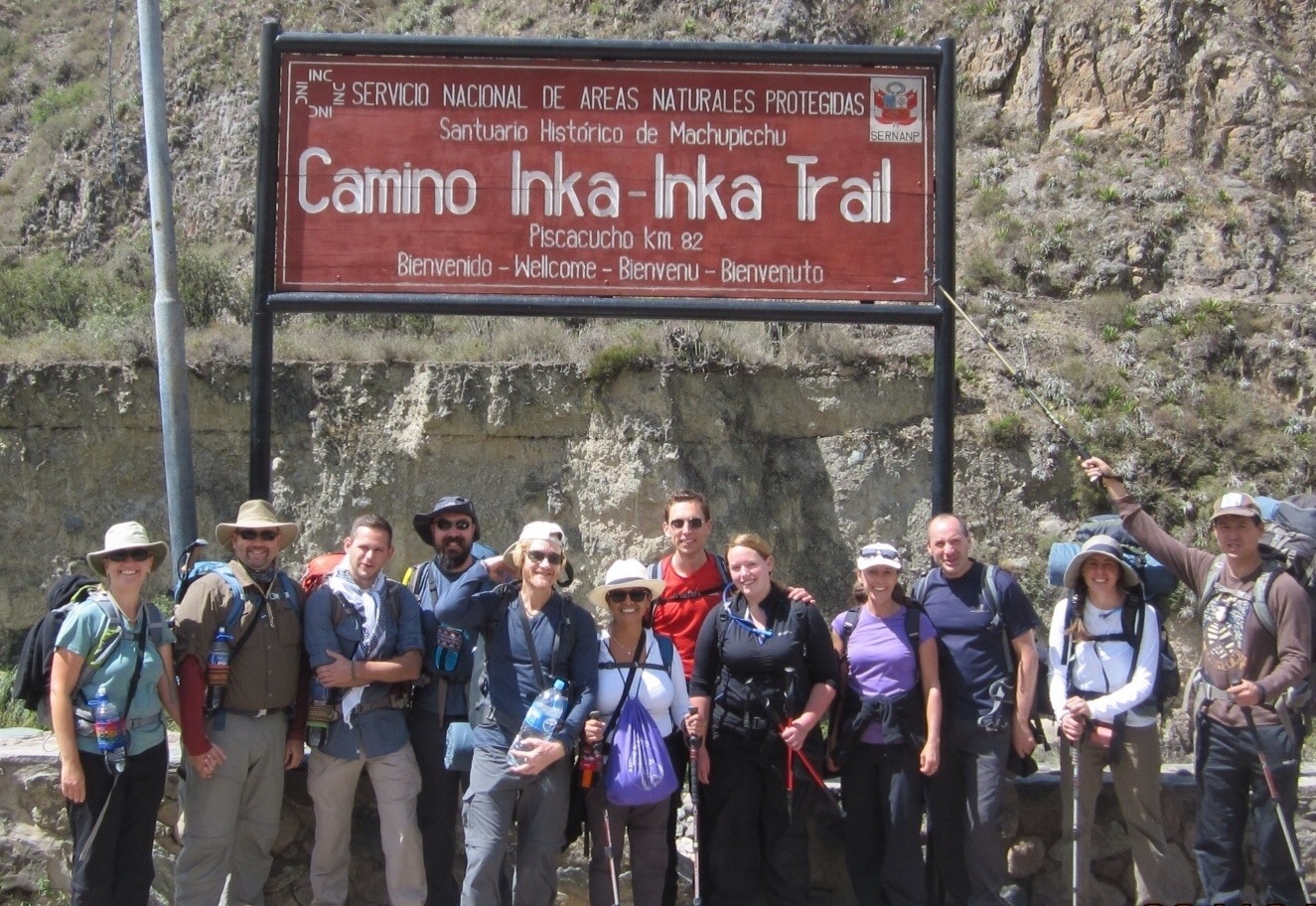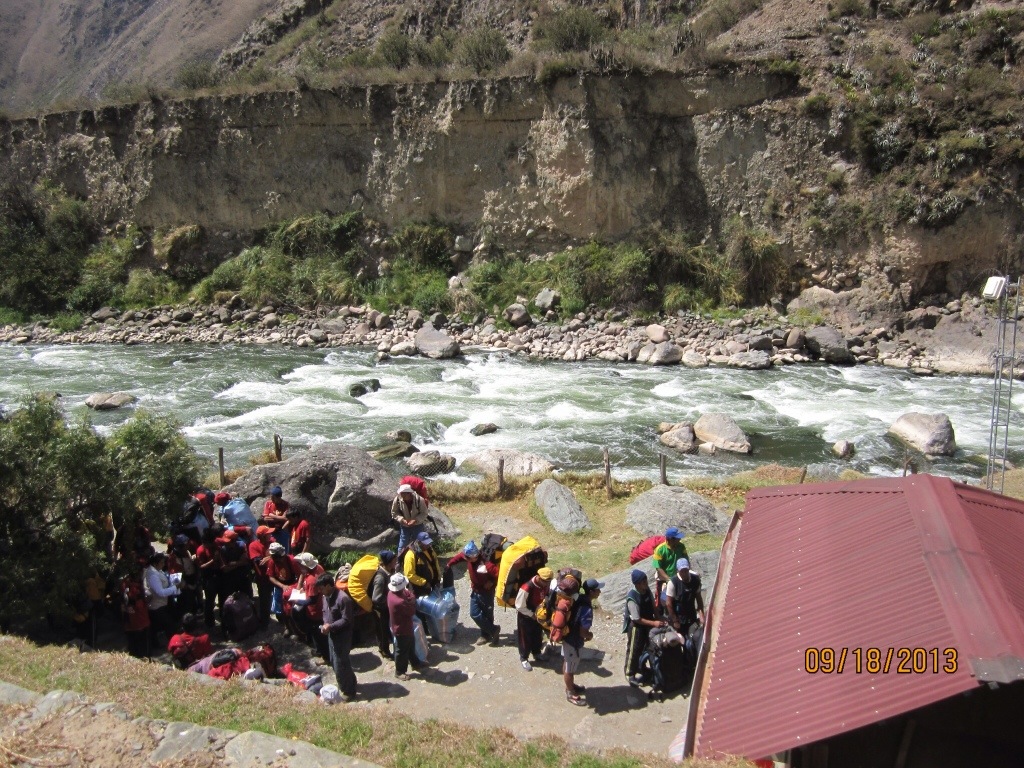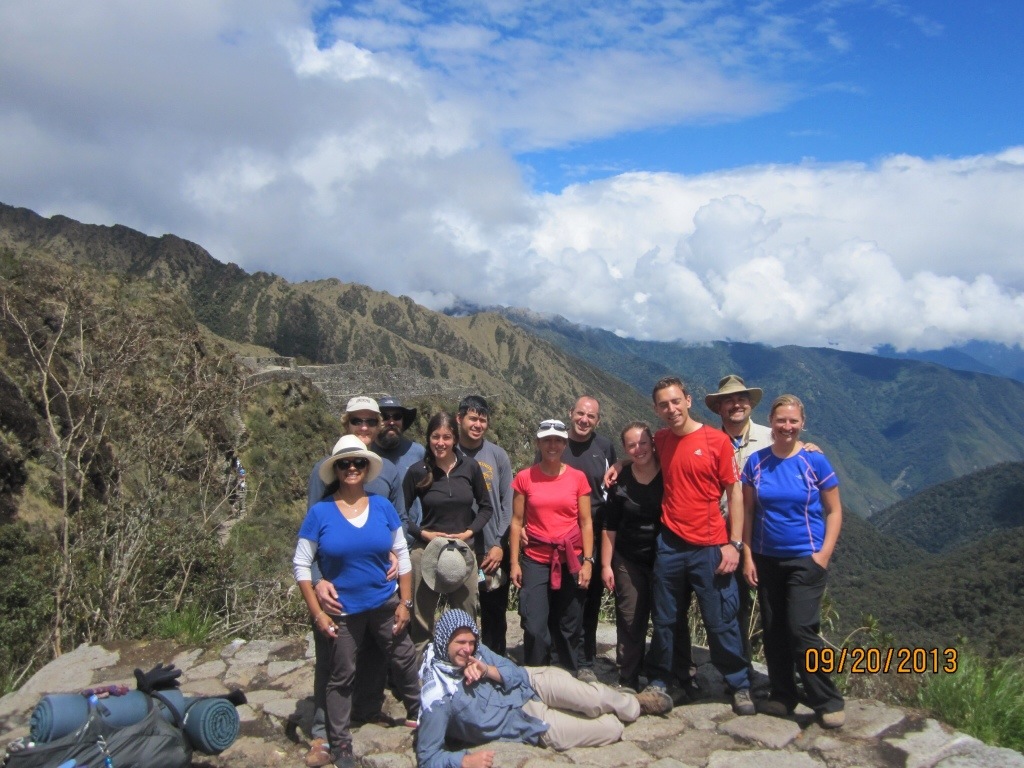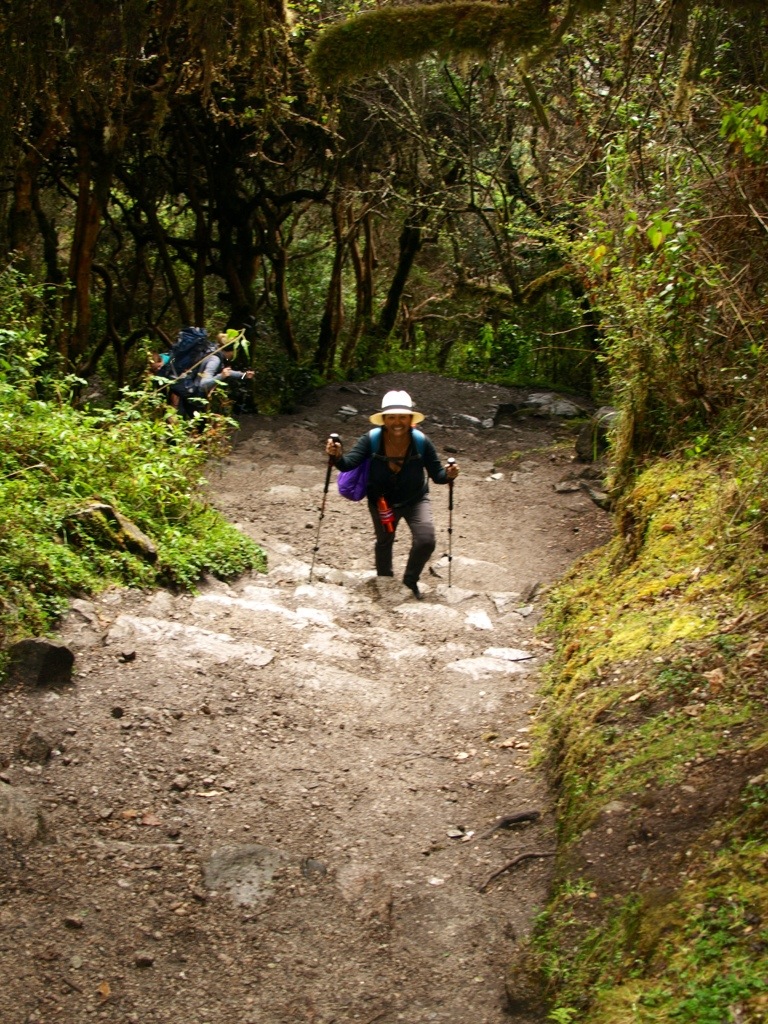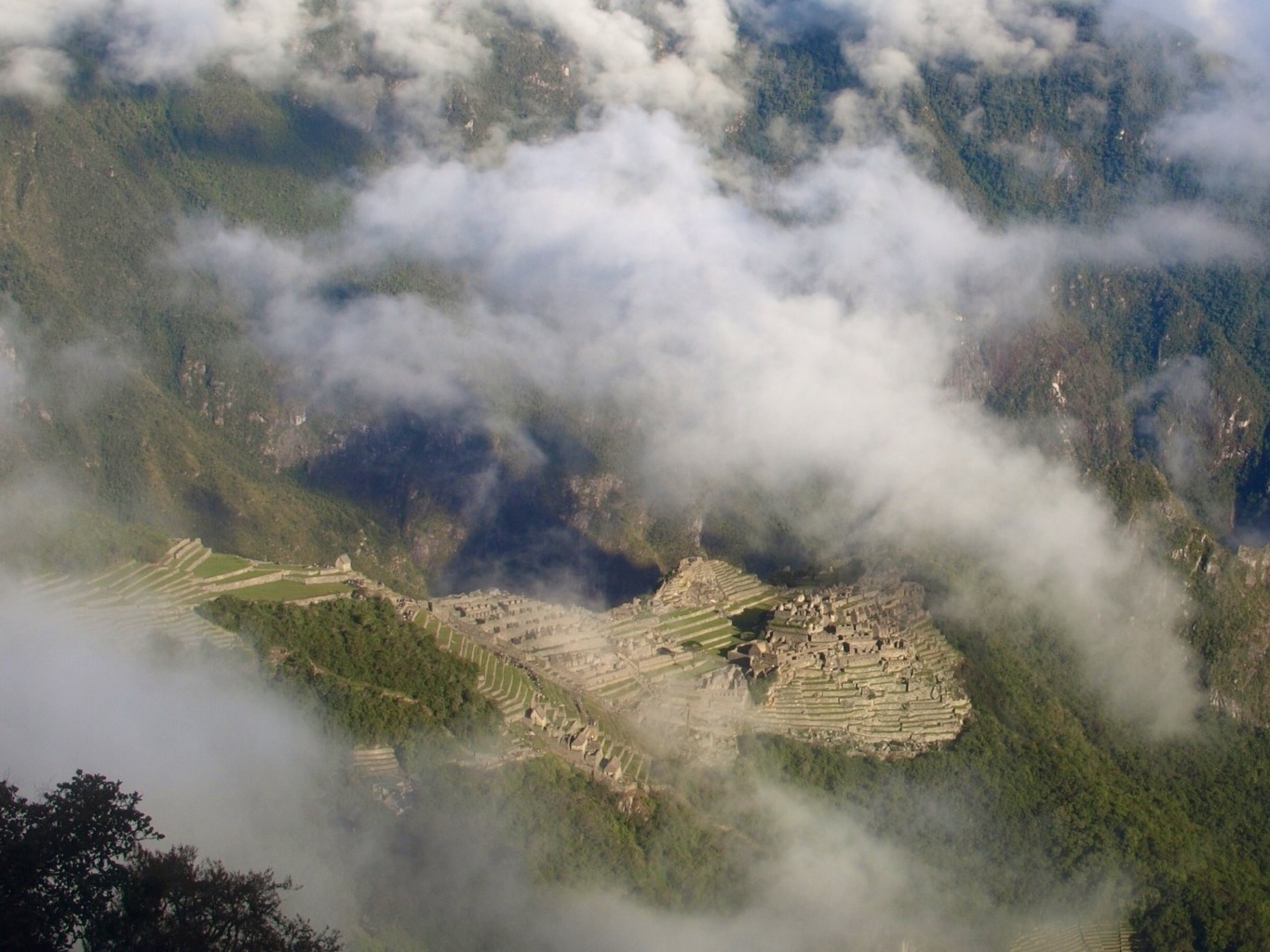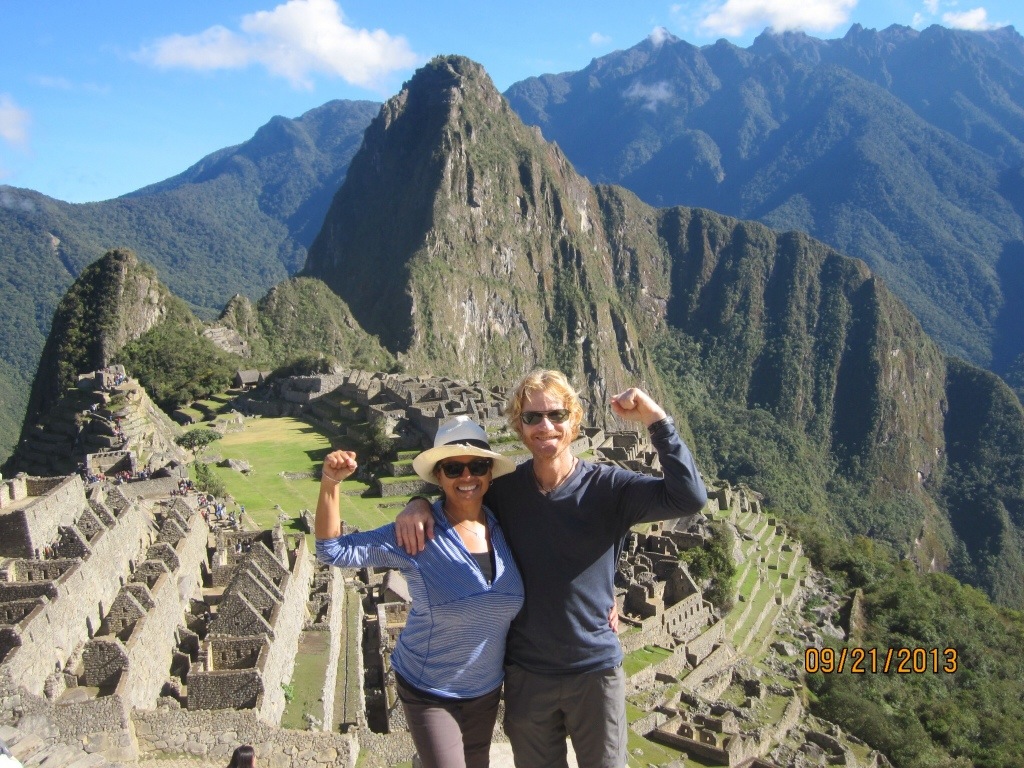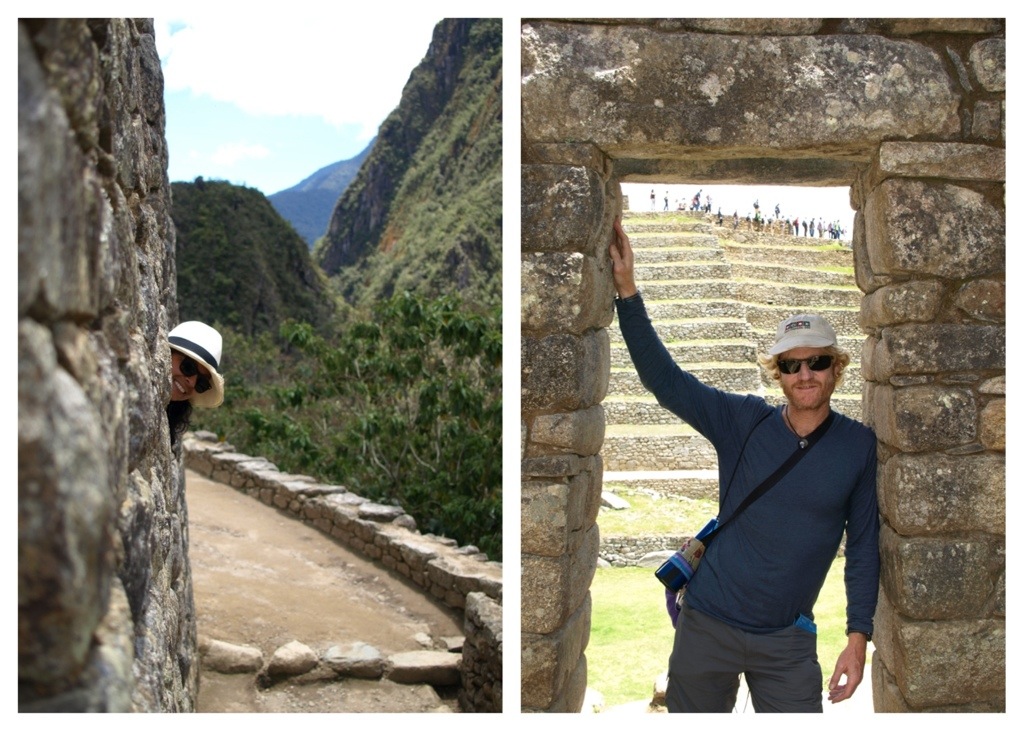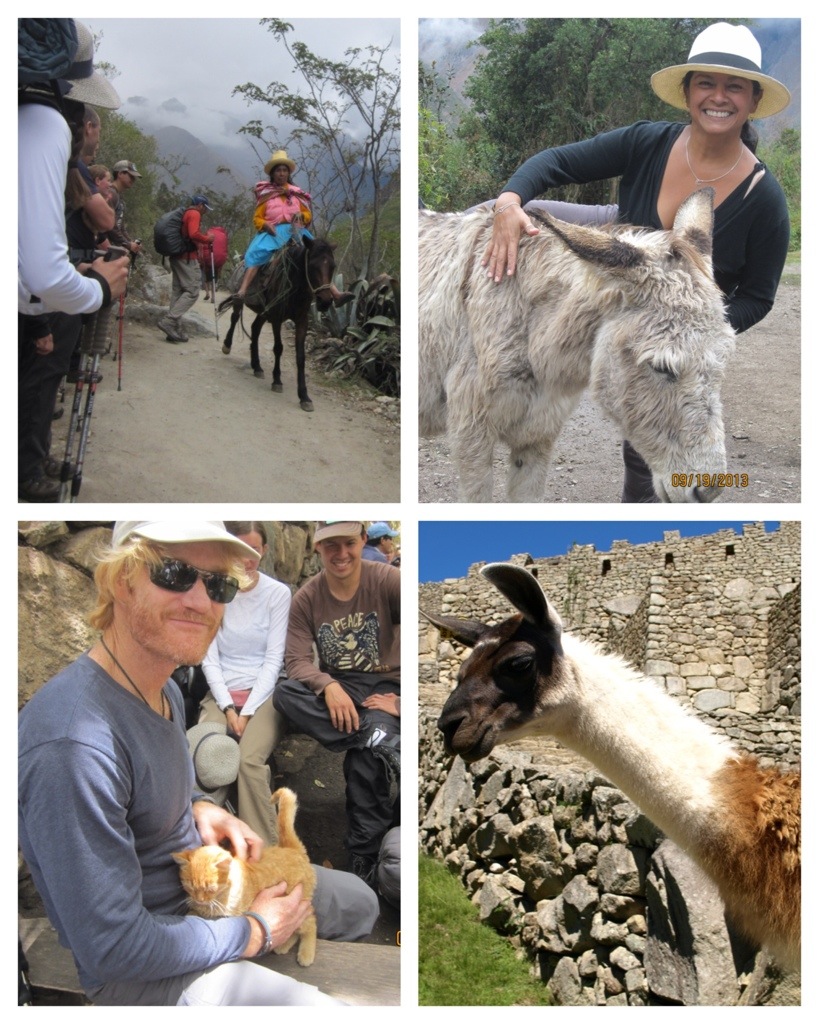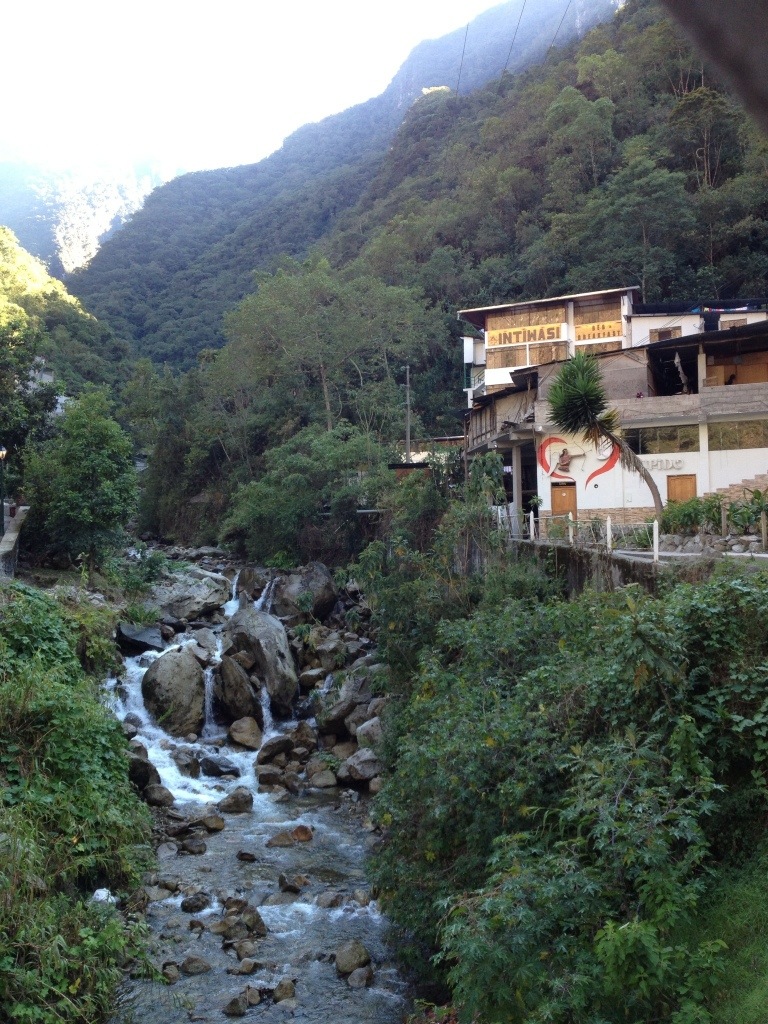Before sharing the toils and triumphs of our Inca Trail hike, here’s me getting the cast cut off my foot just two days before our hike began.
Hiking The Inca Trail
(Inca Trail / Machu Picchu – 18-23 September, 2013) Let’s get one thing straight from the onset, hiking the Inca Trail is no walk in the park (with or without an injury). It is a formidable challenge. Obviously doable… since thousands of people accomplish the marathon-sized trek each year. However, romanticized notions of the actual hiking experience itself should be set aside; the hike is grueling– long, steep uphill muscle-numbing climbs are followed by never ending descents that pound the knees into aching submission. It’s tough.
As immensely difficult as it is, the unique experience of hiking the Inca Trail is most definitely worth every step.
Jessica and I signed up for the classic 4 day/3 night Inca Trail hike, which begins at Kilometer 82 (yes, that’s literally the name of the town) and ends in Machu Picchu. At 44 kilometers (26 miles) in length, it is literally a marathon.
Day 1, Excited to Be Hitting the Trail
Our spirits soared as the day began. We’d reserved our spot on the Inca Trail hike 7 months prior and now (finally) our day of departure was here. Excitement, apprehension, and eagerness rose out of bed with us at 4:45 AM the day of our hike. A shuttle bus picked us up from our hostel a bit later and we were officially underway.
Our guide introduced himself as David, a well-educated Peruvian guy of about 30 years old. He spoke English well despite having grown up in a tiny farming village in rural Peru. His father sent him to school in Cusco at a young age where he eventually got his university degree in Tourism and History. David spent the first few minutes in the center-front of the bus introducing himself and describing what our morning would look like: First, we’d continue our bus ride for an hour and 40 minutes through the Sacred Valley of the Incas to Ollantaytambo. There we would make a brief stop for breakfast. Then an additional 30 minutes of rocky-roaded bus travel was needed before arriving to Kilometer 82, our starting point for the Inca Trail.
Getting organized at Kilometer 82.
There were a total of 12 people in our group, five couples plus two guys that had been friends since their days together in the Air Force. Here we are at the trail head, all fresh and full of energy.
And so we began walking. That first day was mostly easy slopes up followed by gentle descents. For the better part of the day, we hugged the Urubamba river, a picturesque flow of rumbling glacier-melt that rushed through the valley as if late to an important event. The river’s song became our soundtrack and even when a turn in the trail prompted us to say good-bye to the Urubamba, we still followed one of its tributaries so that the sound of tumbling water was ever-present.
We stopped for lunch midway through our trek and then hiked another few hours to the first campsite. Along the way, we paused several times while David filled us in on some of the more interesting plants the Inca’s used as medicines. We also got our first real introduction to the porters or “chaskis” that accompanied us the entire hike. Chaski is a Quechua word that means fleet-footed runner, and they certainly were. Meaning, they didn’t actually accompany us on the trail as much as they ran past us carrying food, cooking equipment, and our tents. Our group of 12 was assisted by….get this… a total of 18 chaskis.
Our guide (David) sharing his knowlegde. Chaskis hauling their huge packs up the trail. Campsite #1.
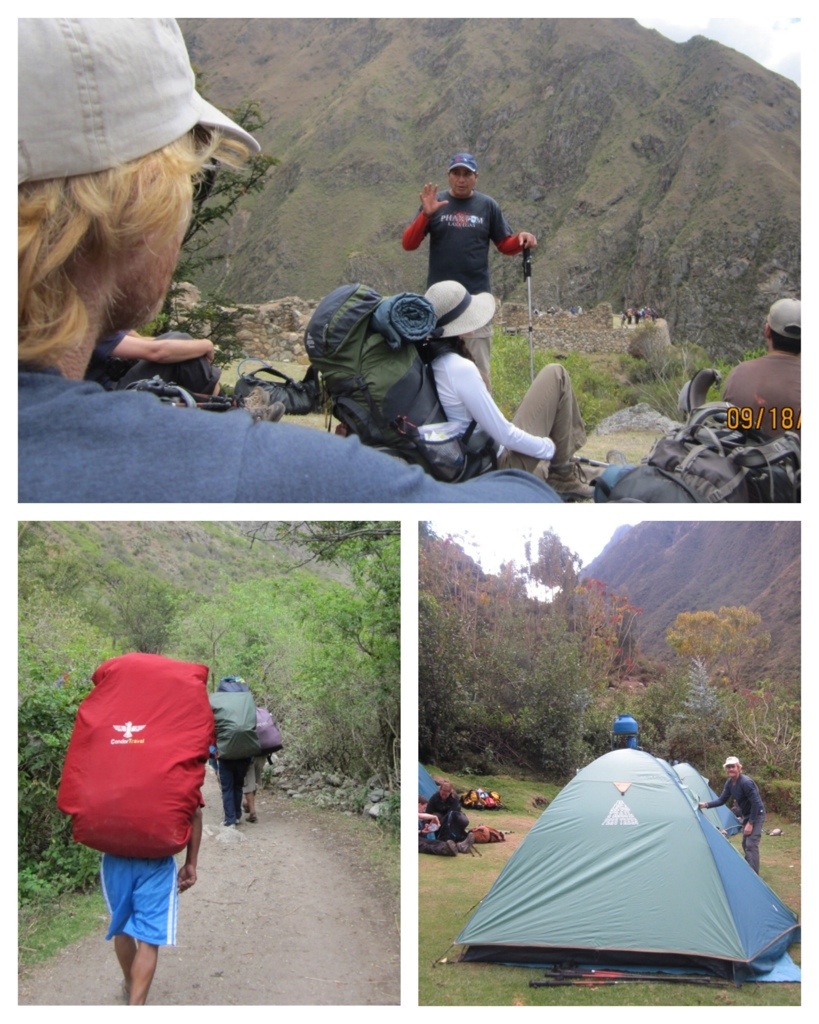
Chaskis Make the Trek
Before you scoff and chortle at the proportion (or disproportion) of chaskis to tourists and conclude that our hike must have therefore been a cake-walk, I warn you, don’t even go there! What the chaskis did for us was to make our hike of the Inca Trail many times more enjoyable that it otherwise might have been. However, I assure you…they did not carry us on their backs (nor did they even carry our personal backpacks).
To fully appreciate the role of the chaskis and the greater chaski culture one must first know a bit about their history. Prior to 2002 tourists and tour companies for the Inca Trail hired chaskis to carry the camping equipment without any controls or guidelines. This led to the severe chaskis-abuse. Chaskis come to work on the Inca Trail from poor farming communities throughout the Andean region of Peru. They are typically not highly educated, but of strong physical stock. Trekking companies would routinely take advantage of them by requiring that they carry packs of 60, 70, 80 or more pounds, and then not provide them with adequate food or sleeping conditions.
That’s when the Peruvian government stepped in to regulate. Now (by law), chaskis are not allowed to carry more than 18 kilos each (about 40 lbs). At the start of the trail they go through a weigh-in procedure (just like long-haul truckers) to ensure no packs exceed the limit and also that weights are distributed fairly among the chaskis. Further requirements are that chaskis be provided a sleeping bag, shelter, and food equivalent in amount to what is cooked for the tourists they serve.
Chaskis at the weigh station (next to the rushing Urubamba river).
These government regulations revolutionized (and humanized) the Inca Trail “industry.” I didn’t hear specifically how much the chaskis are paid, but our guide said that (when tips are included) they can earn an amount equivalent to what a first year teacher would make in the states (adjusted for cost-of-living differences, of course). They work hard for it, but compared to what they could earn working on the farm, it’s good money.
Day 2, The Hardest Day
We were warned the second day of our trek would be the most difficult. We had to hike up and over a 13,677 (4200 m) foot pass in order to climb out of one valley and into the next. The trail itself is constructed of small and large stones planted individually with thought and care. Its width averages about 4 1/2 feet wide, but varies from 2 feet wide in places to 5 or 6 feet. The height and depth of the steps is mostly what kills you…and then of course, the sheer number of them. The Inca people were not tall, but they sure as heck made some tall steps.
I haven’t even mentioned the high altitude. Maybe that’s the most challenging aspect of it. Ascend too many steps too quickly and you’ll feel your heart thumping furiously in your chest. Ascend too slowly and people will pass you up and make you feel like a chump. (I’m not sure which is worse.)
The morning portion of day two was heavy on the uphill, but nothing compared to what we faced in the afternoon. If you look closely deep into the photo below, you will see the camp where we ate lunch. The uphill climb from there was steep and relentless, especially the final rise to the pass. Jessica and I both used the walking sticks we’d rented to leverage our way up step by agonizing step. I reached the high-pass first and snapped Jessica’s final push to the summit.
Clouds enveloped us from time to time creating a mystical scene.
Our afternoon hike began at the base of the V far below.
Though our group celebrated heartily and took a good many photos, the day’s hike didn’t end at the high pass. What goes up must come down, doesn’t just apply to Frisbees. Though our legs were stressed and tired from muscling up the 200+ stories worth of stone steps to the ridge-line, several hundred more giant, narrow, uneven, Inca-stone down-steps awaited us on the other side. Hiking downhill may take slightly less brute exertion than going up, but not by much. Each step down applies compression forces to the joints that accumulate quickly into aches and pains. Especially when the steps are large, uneven, and slick from the messy rain that started falling on us as we carefully lowered ourselves down the mountain.
The arrow points to the passage over the ridge. From there, follow the trail as it plummets sharply into the next valley and our Day 2 campsite.
As I mentioned, Jessica and I had both been using our walking sticks all day. They really helped take a degree of pressure off our legs. We stopped to lengthened them a few inches for the downhill. Jessica, still burdened by a latent ski injury, took each step slow and careful. And the way I was treating my freshly sprained ankle was just asking for trouble, so I took it super-slow on the down strokes, too. Each of us shrieked more than a few times as occasionally our steps settled down at just the wrong angle for our injuries. But with patience and steady determination, we reached the campsite below, exhausted and thrilled the hardest day of our hike was over.
Day 3, Beware of the Gringo Killer
Our guide warned us that Day 2 was the hardest day, but let that record show that Day 3 (the longest day) was a helluva close runner-up. Ten miles of trail would be covered on the third day, three miles more than we had hiked on either of the first two days. Our rewards for the extra effort were spectacular views of soaring glacier peaks and lengthy green valleys partially filled by ghostly clouds of moisture. We caught sight of a shimmering rainbow just after a light rain, too. We also stopped to visit several Inca sites along the trail and had ample chance to marvel at their accomplishments.
Aside from the Incan Ruins and breathtaking views the trail delivers, the actual stone trail itself is quite a head-shaking achievement. It is more than just the sum total of hundreds of thousands of large stones being placed along a path. In many places, the Incans built-up the trail by several meters so that the path you walk on practically floats next to the mountainside, not on it. There are a couple of “Incan tunnels” where the trail dives behind a sliding rock face. Along parts of the trail, you’ll find slits- 4 inch wide “channels” -carved into the stone path to allow water to drain through the trail without eroding it. All in all, the Inca trail is a feat of engineering that rivals even the great pyramids.
Our group pauses for a “family” photo. (By day 3 we were like family)
The last couple of hours of our third day on the trail were perhaps the toughest of all. Our guide told us this section was affectionately known by the locals as the “gringo killer.” We would face 2,000 steps downward before arriving to the campsite for the night. It’s called the gringo killer because of the toll it takes on the knees. The tough downhill scramble we’d completed the previous day was only about 500 steps, now we’d have four times that many to overcome. And on this longest day of hiking, we had the additional threat of darkness to contend with. Yikes!
By the time Jessica and I made camp, it was indeed nightfall. The chaskis applauded our shaky-legged arrival into camp and handed us a welcoming cup of strawberry punch and a freshly-popped snack of warm popcorn.
Best Camping Food EVER!
Typical camping food is what? Maybe hot dogs, macaroni ‘n cheese and trail mix. If true, our meals were anything but typical. Our first day’s lunch was stuffed trout with a side of rice and veggies. Other meals included broiled chicken, ceviche, pasta salad, and even quiche. Almost every meal began with soup, but I’m talking really top-notch soup….like, four-star-restaurant quality soup! Many moments on the trail were quite chilly so the soups warmed our hands as well as our stomaches.
Check out the spread.
We even ate fancy pancakes for breakfast on two occasions. (They were “fancy” because of the little carmel syrup design they swirled around the edges.) Someone from our group commented, “I don’t know how they cooked 12 pancakes and served them all to us fresh and hot. Whenever I make pancakes on a camping trip, I have to cook them one at a time.”
Each main course was followed by an item of dessert, too. We had chocolate pudding, a fruit-cobbler-ish type of dish and even jello on one occasion. Don’t you need a refrigerator to make jello? Perhaps it was simply cold enough outside.
Day 4, Arriving to Machu Picchu
This final day of our Incan adventure started alarmingly early…as in 3:20 in the freakin’ AM. An early start was needed for several reasons; to eat breakfast, pack-up our gear, and still get a good spot in line at the Machu Picchu check-point. Also, because our team of chaskis was leaving us; their last act being a mad dash down the mountainside to the make the first train back towards Cusco.
The early morning light was slowly spilling over the mountains just as our group passed through the check-point at 5:30 AM. We marched dutifully behind our guide for close to an hour more, in this final push towards our Machu Picchu goal.
Most visitors to Machu Picchu arrive through its “main” entrance, but there are actually several routes to get there. The Inca Trail approaches the city through the Sun Gate, a separate, but connected Inca site located to the east of Machu Picchu city. The Sun Gate’s connection to Machu Picchu is both spiritual and astrological; on the morning of the fall equinox the sun’s rays will exactly beam through the Sun Gate and strike a particular “astronomy” building at the center of the city, thus marking the start of a new season. (Those Incas were geniuses!)
Our group took seats at the Sun Gate steps, still an hour’s hike away from Machu Picchu itself, and waited for the sun to rise over the mountains. Machu Picchu lay below us, but was totally obscured by clouds and fog. The sun was surely there on schedule (I think), but its rays could not penetrate the white mist…at first. The more patiently we waited, the more the scene began to change and clear. First we saw pieces of mountains across the way, then whole mountainsides. The fog thinned more quickly as the minutes passed. Then, there is was….the famed Lost City of the Incas, Machu Picchu, slowly emerging through the parting clouds. It was the moment we’d be waiting for. A burst of claps and cheers erupted. Machu Picchu is truly a jewel on earth.
Just a bit more hiking down from the Sun Gate finally delivered us to Machu Picchu city. We had arrived. Once there, David shared with us his significant study of the site before saying his good-byes. We were then free to explore the place on our own, which we did in earnest.
After hiking so hard and for so long, reaching our Machu Picchu goal was satisfying, but not a pinnacle moment. It was the hike itself, THAT was what we had come for. Machu Picchu is a phenomenal place and I’d recommend everyone visit it at least once in their lifetime. But if you have the time, money and courage, I’d really recommend you hike the Inca Trail.
Animals on the trail…
Aguas Calientes Extra
I’ve heard a lot of people poo-poo Aguas Calientes, the small city that lies at the base of Machu Picchu mountain. Jessica and I stayed there one night before traveling back to Cusco by train. Yes, it’s touristy and a little overpriced compared to the rest of Peru, but it’s also a beautiful place. A river runs right through the middle of it before curling its way around the mountain. Several simple bridges cross the river and sidewalks line its edges. The whole town is surrounded by high mountain walls giving it a hidden treasure type of appeal.
We would have been happy to stay in Aguas Calientes several more days, but we are also certain more hidden gems await us in other parts of the world. Onward we travel…

